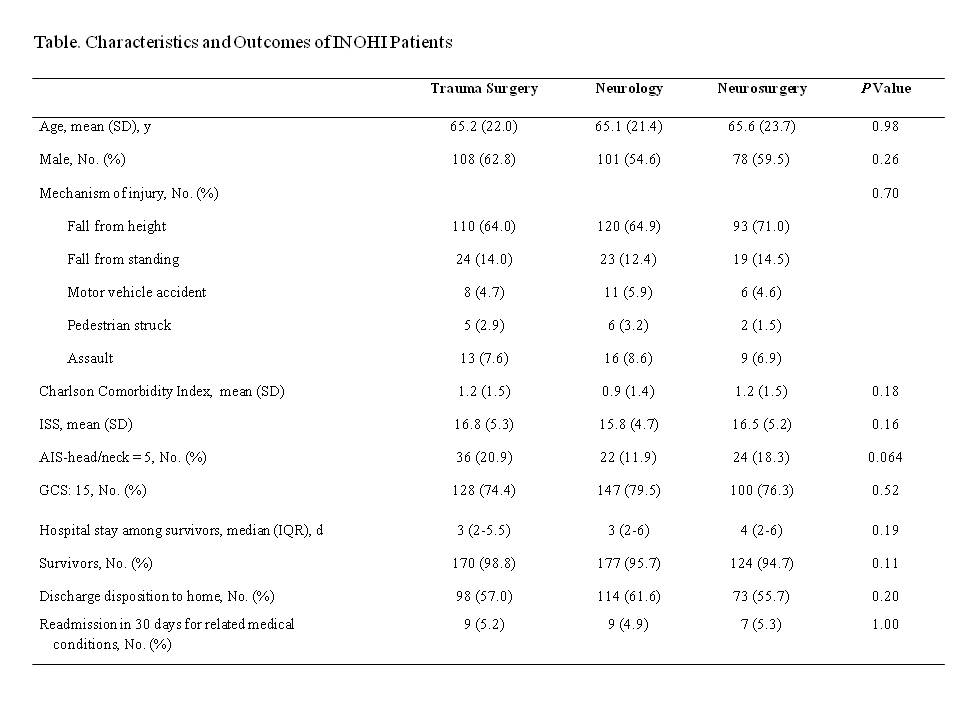Back to 2014 Annual Meeting Abstracts
Admissions for Isolated Non-Operative Head Injuries: Sharing the Burden among Trauma Surgery, Neurosurgery, and Neurology
*Ting Zhao1, *Ali Y Mejaddam1, *Yuchiao Chang1, *Alice Gervasini1, *Marc A DeMoya1, *David R King1, Hasan B Alam2, George C Velmahos1
1Massachusetts General Hospital, Boston, MA;2Department of Surgery, University of Michigan Hospital, Ann Arbor, MI
1. OBJECTIVE
To compare the outcomes of patients with isolated non-operative head injuries (INOHI) admitted in the three services: Trauma Surgery, Neurosurgery, and Neurology.
2. DESIGN
Retrospective case series.
3. SETTING
Level I trauma center in New England.
4. PATIENTS OR OTHER PARTICIPANTS
INOHI patients admitted from 01/01/2009 to 08/31/2013. Excluded were: a) polytrauma patients with head injury, who were always admitted to the Trauma Surgery service and b) isolated head injuries, who required or had the potential to require surgical drainage, were almost always admitted to the Neurosurgery service.
5. INTERVENTION(S)
No.
6. MAIN OUTCOME MEASURE(S)
The primary outcome was hospital length of stay, and secondary outcomes included survival to discharge; rate of admission to ICU; ICU length of stay; ED length of stay; in-hospital complications; neurological status at discharge; discharge disposition; and readmission within 30 days.
7. RESULTS
488 INOHI patients were admitted (Trauma Surgery 172, Neurosurgery 131, Neurology 185). Age, gender, mechanism of injury, Charlson Comorbidity Index, ISS, head AIS, and GCS were similar among the three groups. No differences in outcomes were found (Table).
8. CONCLUSIONS
INOHI patients admitted to Trauma Surgery, Neurosurgery, or Neurology in our institution had similar outcomes. A rotational policy of admitting INOHI patients is feasible and safe among services with expertise and commitment in the care of these patients. Such a policy will relieve busy Trauma Surgery services from the burden of exclusive admission of INOHI patients and can serve as a national model of caring for INOHI patients.

Back to 2014 Annual Meeting Abstracts
|
|

